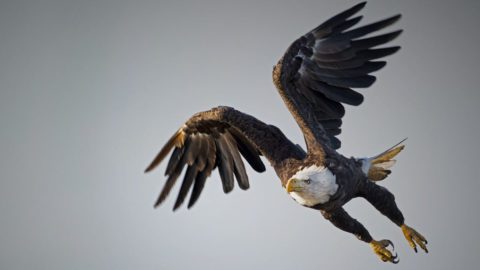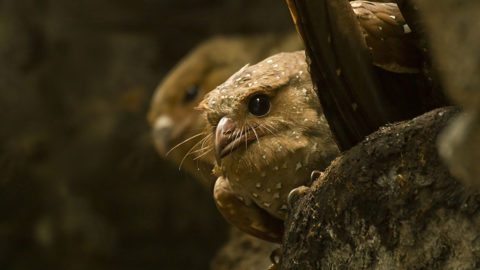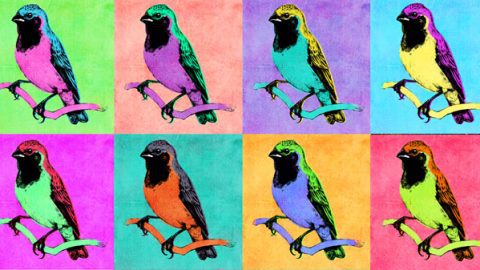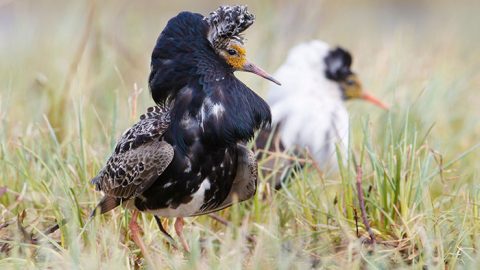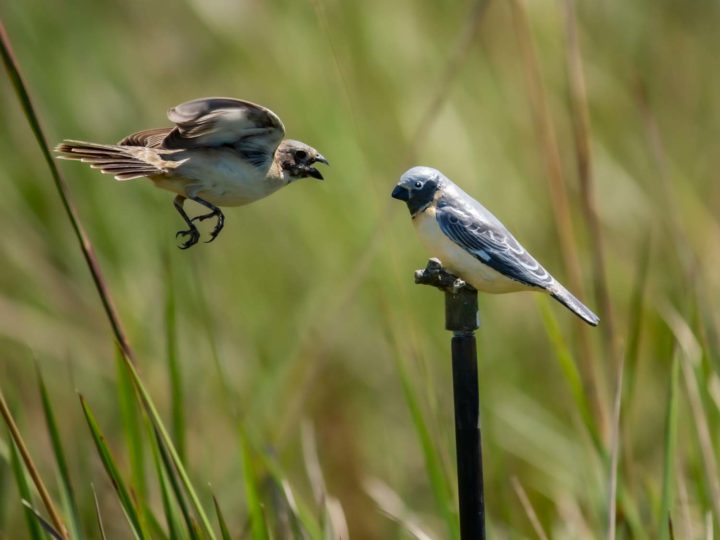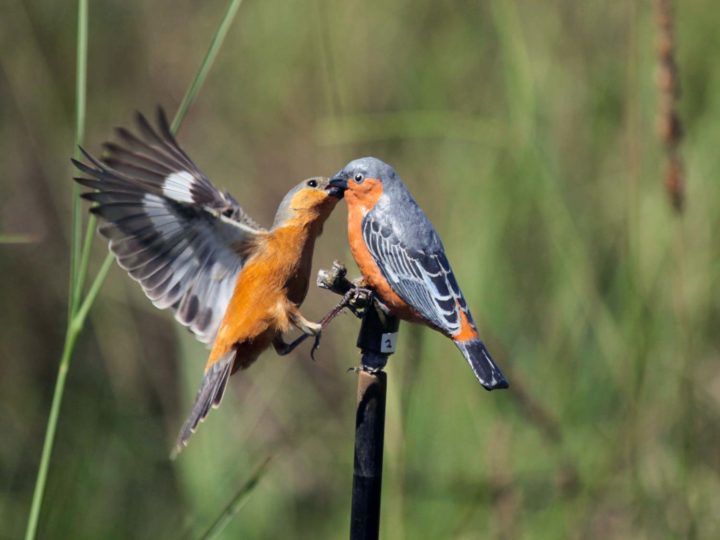By Shuffling Genes, a Songbird Takes a Shortcut to Speciation
In South America, a new bird has emerged in the evolutionary equivalent of a blink of an eye.
By Gustave Axelson
April 13, 2021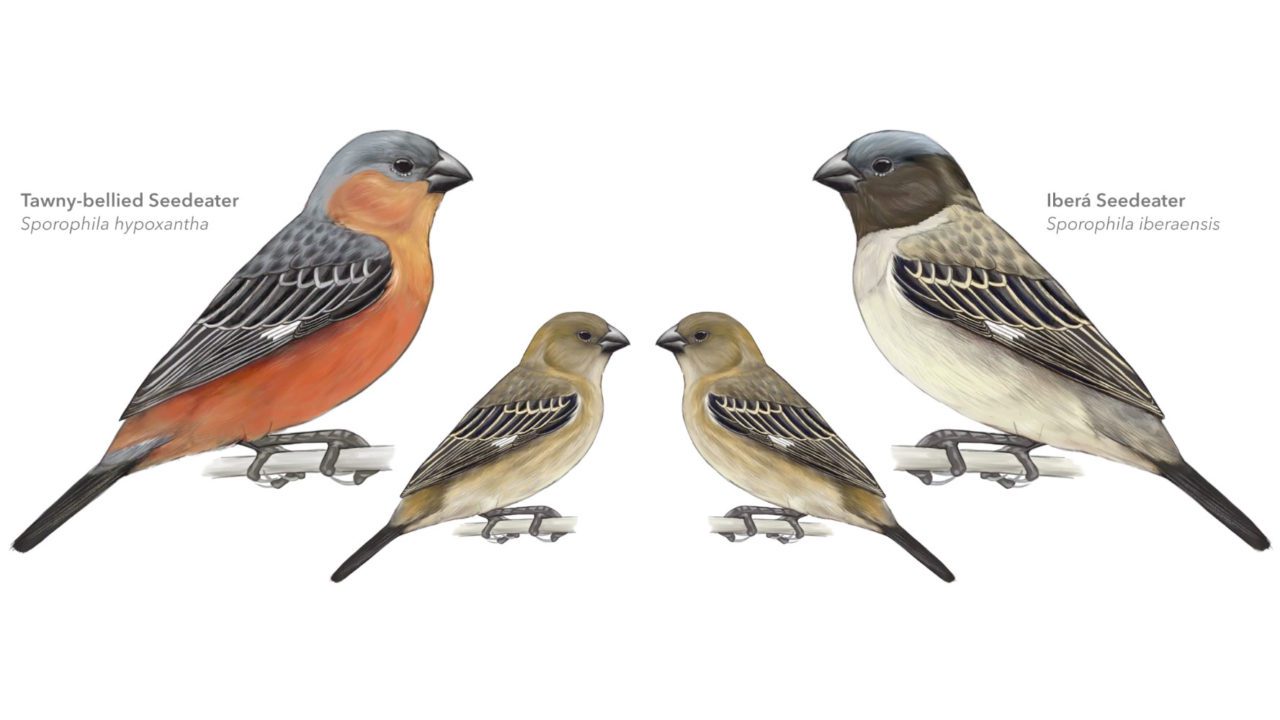
From the Summer 2021 issue of Living Bird magazine. Subscribe now.
Speciation—or the emergence of a new species—is a slow and steady process that plays out over millions of years among a stranded group of creatures, isolated from the rest of their kind by geographical barriers and left to evolve on their own.
Or so it was generally thought.
New research published in the journal Science challenges the typical model of speciation by documenting how a recently discovered songbird in South America traveled a very rare evolutionary path. The study delves into the origins of the Iberá Seedeater in northern Argentina, which appears to have formed from a unique mixing and matching of existing genetic traits among 10 or more other species of seedeaters in the same area.
“These differing genes have been reshuffled into a unique combination that produced the Iberá Seedeater,” said study senior author Leonardo Campagna, a research associate at the Cornell Lab of Ornithology. “This species has a mosaic of plumage genes drawn from existing genetic variation already found in other seedeater species.”
Campagna says the study shows mating behavior alone can be a powerful evolutionary force, preventing a recently diverged species from interbreeding back with other closely related species—even though they live in the same places, eat the same food, nest at the same time, and are nearly identical genetically. In other words, speciation doesn’t always require genetic mutations that arise in an isolated population.
And it doesn’t require millions of years. Campagna estimates that it took on the order of thousands of years for the evolutionary process to play out, birthing the Iberá Seedeater as a separate species that would only mate with its own kind.
“In evolutionary terms, that’s very fast!” exclaims Campagna. “This is the clearest example in birds of how reshuffling of genetic variation can generate a brand-new species.”
“This is a beautifully thorough and comprehensive study of the role of genes, plumage, and behavior in the origin of a new species,” said Rosemary Grant, a preeminent scientist in the field of evolutionary biology who was not involved in the study. Grant and her husband, Peter, spent decades studying the species group of Darwin’s finches on the Galapagos islands, famously discovering how natural selection influenced the shape of beaks. “This paper adds significantly to our increasing understanding of speciation.”
Read More
Carlos Daniel Cadena, an evolutionary biologist at Universidad de los Andes, Colombia, and who was also not involved in the research, concurred: “The idea that new species of capuchinos [seedeaters] arise via reshuffling of preexisting genetic variation to produce new phenotypes on which selection acts to drive divergence is mind blowing.”
The Iberá Seedeater was first discovered in the remote, swampy grasslands of Iberá National Park in northern Argentina by study coauthors Adrián S. Di Giacomo and Cecilia Kopuchian from Centro de Ecología Aplicada del Litoral, Argentina, in 2001. The new study’s lead author, Sheela Turbek, a graduate student from the University of Colorado Boulder, spent two field seasons locating nests and performing behavioral experiments in Iberá National Park, where the Iberá Seedeater lives among six other closely related species of seedeaters.

The researchers used a classic experimental setup to test whether different-looking seedeaters might be separate species. They made a model of a male Iberá Seedeater and played its song through hidden speakers. Nearby Iberá Seedeaters thought their territory was being invaded and attacked the decoy, while Tawny-bellied Seedeaters ignored the model. Images by Sheela Turbek. 
Then the researchers reversed the test. They set up a model Tawny-bellied Seedeater and played its song. This time, nearby Tawny-bellied Seedeaters attacked the model as if defending their territory. But Iberá Seedeaters didn't recognize the Tawny-bellied as a threat, and didn't respond to the decoy. One reason male birds sing is to warn away other males of their own species, so the lack of response is evidence that the two forms are indeed separate species.
The different species vary in coloration. For example, the Iberá Seedeater has a black throat and sand-colored belly, whereas the Tawny-bellied Seedeater has reddish cheeks, throat, breast, and belly. The researchers compared the entire genomes of these two species, finding only three narrow regions that differed. These regions contain just 12 genes, 3 of which are involved in plumage coloration.
The study authors think that the same reshuffling process found in this research probably underlies much of the diversity among the dozen seedeater species in this region of South America—mix-and-match genetic combinations that are likely generated when seedeaters occasionally interbreed and form hybrids.
Study coauthor Irby Lovette, director of the Fuller Evolutionary Biology Program at the Cornell Lab of Ornithology, summed up the study’s results as the next chapter in understanding speciation: “This is a really beautiful story about a process that we have never seen in quite this way before.”

All About Birds
is a free resource
Available for everyone,
funded by donors like you
American Kestrel by Blair Dudeck / Macaulay Library
